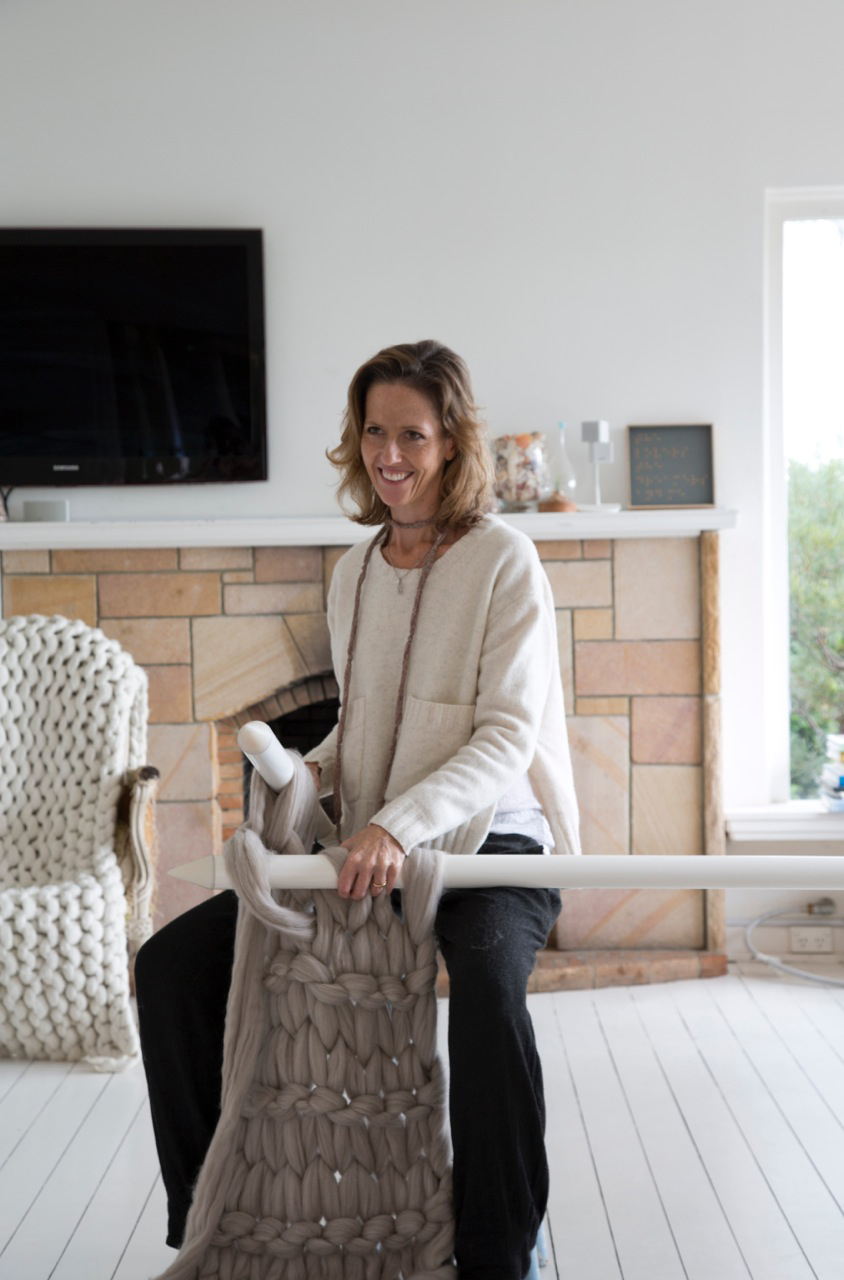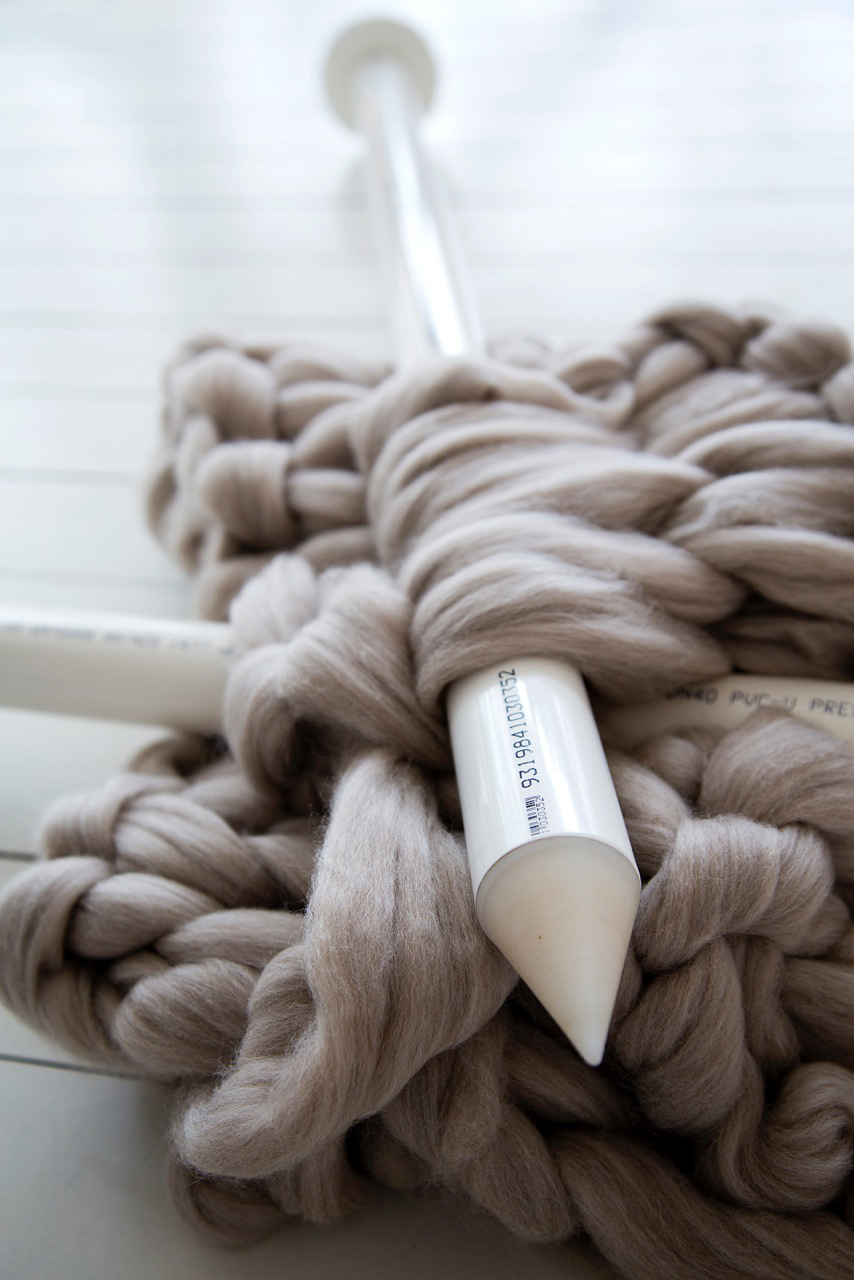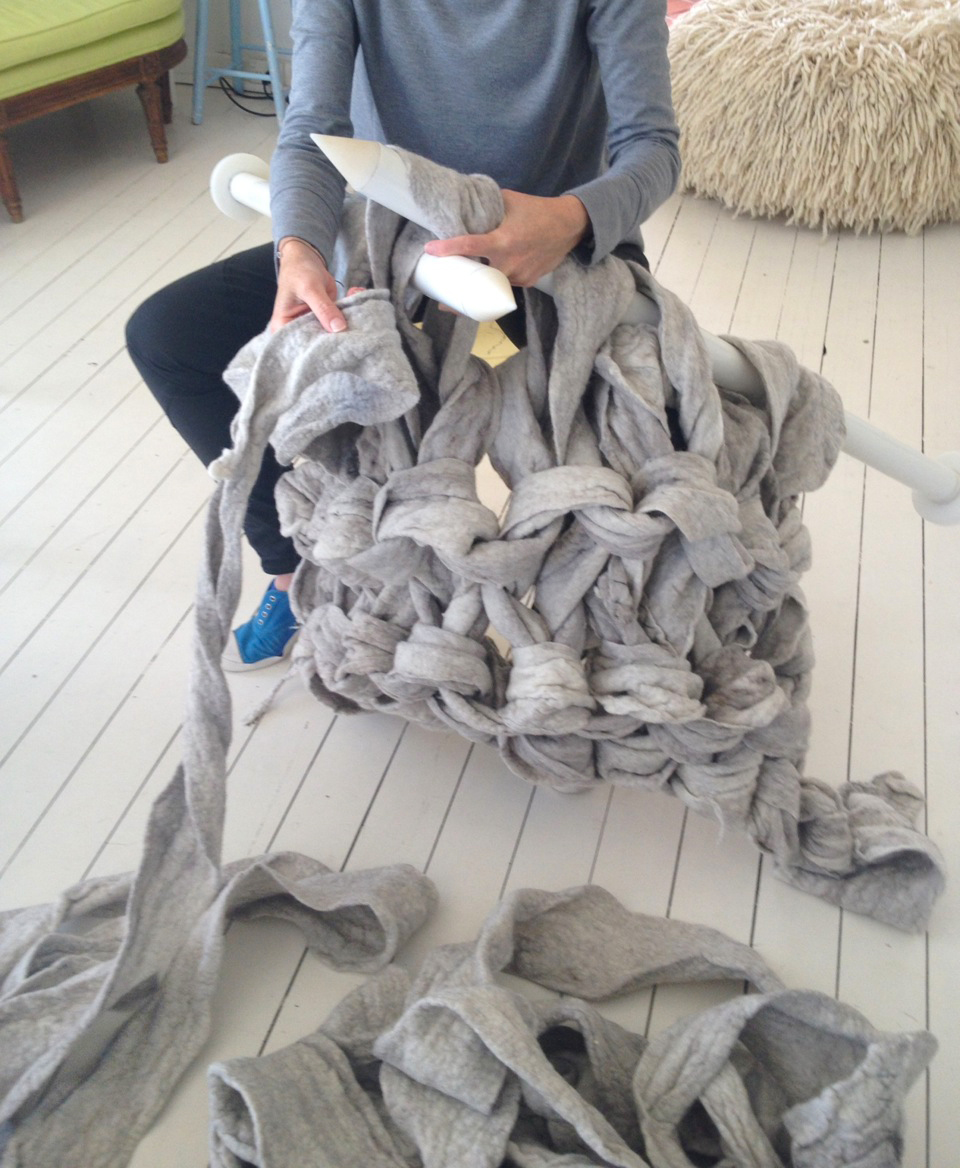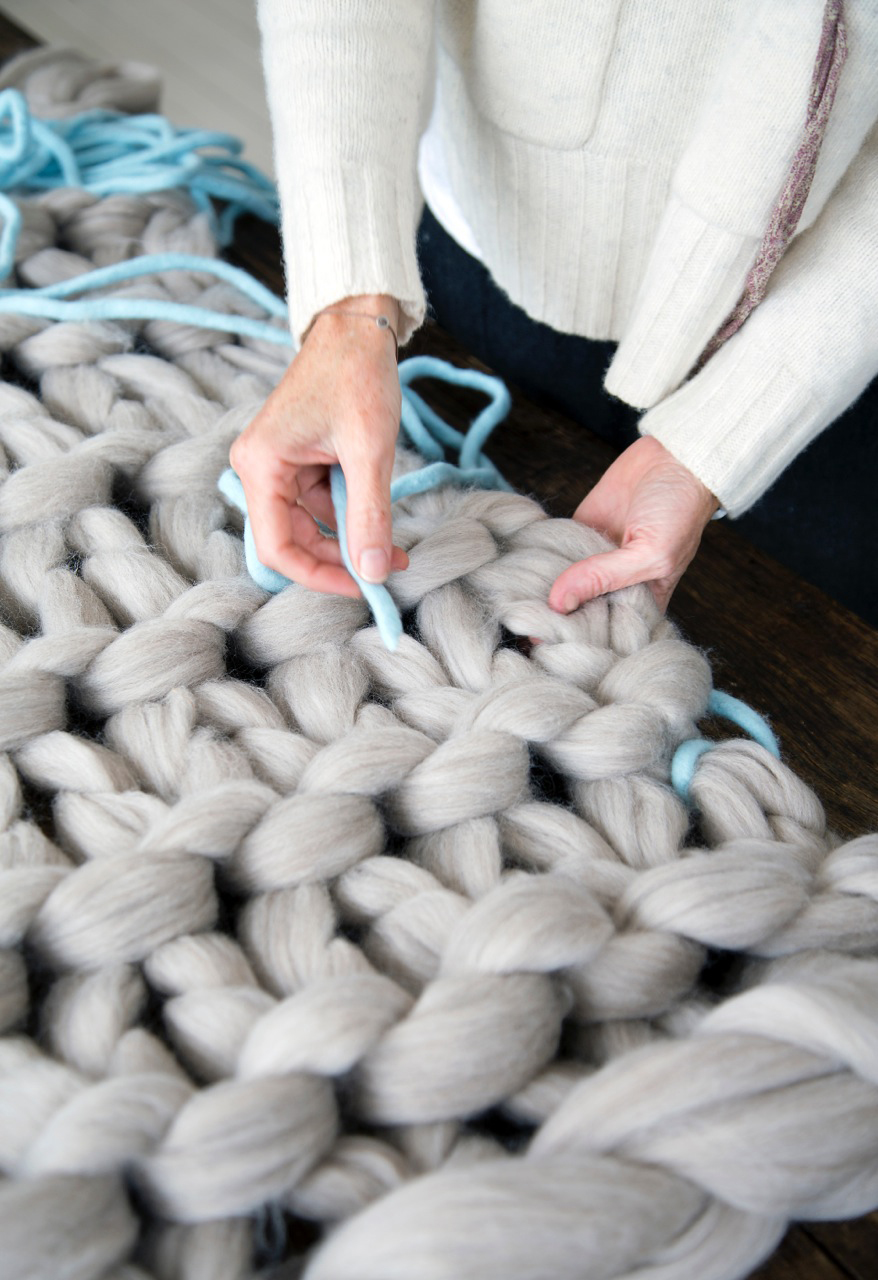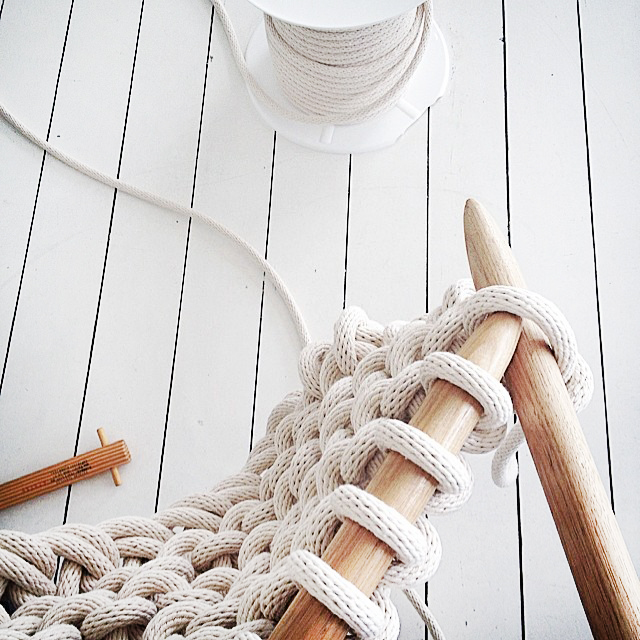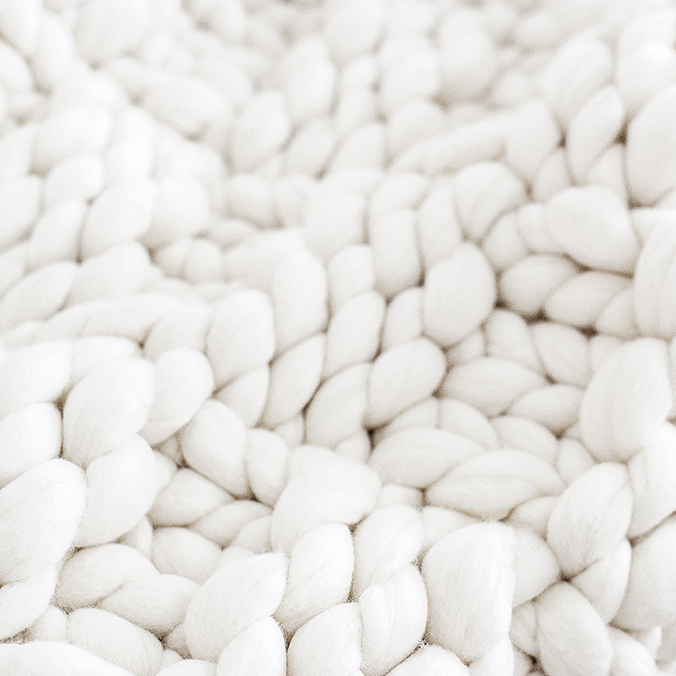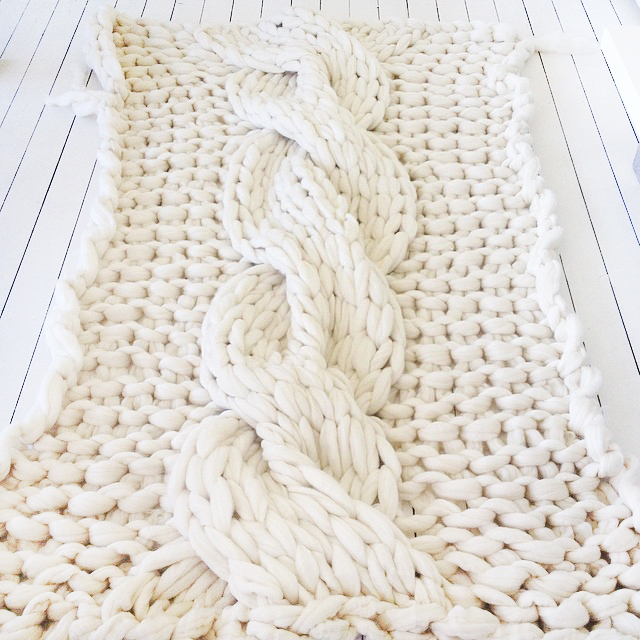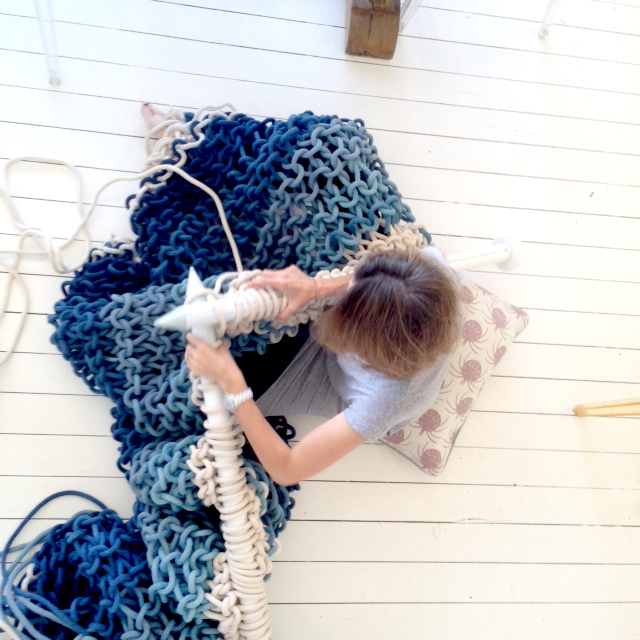Close Knit: An Interview with Jacqui Fink, the creator of Little Dandelion
/“One part bonkers and two parts universal”: We talk to Jacqui Fink, the master knitter behind Little Dandelion, who tells us how she turned her creativity, innovation and passion into a breakthrough career – all inspired by a dream.
“I had a dream which was as profound as it was mysterious. A big loud booming voice told me “YOU WILL KNIT BLANKETS AND THEY NEED TO BE BIG!’. The dream woke me from my sleep and left me feeling very uncomfortable but I didn’t question it at all.”
One look at these knits and you will want to wrap your entire body inside one and hide forever. Carefully crafted with the gentle touch of a mother, the love of a wife, the homeliness of a woman and – more importantly – the creative expertise of a highly talented artist, these pieces truly embody the life of their creator. Said to contain “lumps, bumps and squishy bits” as a result of this inevitable extension, these wools and linens are one of a kind, handmade by one woman, and impossible to replicate. A delicate color palette in complimentary tones, they come in a range of designs, fabrics and sizes, and are custom made to order.
Redefining perfection, Fink constantly strives to break the norm and defy the traditions of mass production. Pouring her heart, soul and life experience into her work, it is the slight imperfections and human quality of the individual identities of each piece that establish Little Dandelion as outstanding in its field. She soothes and almost placates these wooly monsters in the way that a mother would calm and reassure a child who had been bullied at school for their differences and obscurities, instead nurturing and encouraging their unusual, enviable qualities. Disregarding the pursuit of perfection as a quest of anxiety and futility, Fink’s universal woman experiences permeate the ethos of her designs.
K: Who is Jacqui Fink?
JF: I am a 41 year old mother of three children living on Sydney’s Northern Beaches with my Husband, two cats and a menagerie of Australian wildlife who show up for a daily feed. I have a degree in law but only stayed in the profession for a few years as I felt very much like a square peg in a round hole. It was not my cup of tea at all. I launched Little Dandelion in April 2012 after two years of intense experimentation to bed down my process. My Mother taught me to knit as a child but otherwise, I have no technical background in textile design. My work is very much from my heart and is an intuitive expression of three of my great passions: natural fibres, texture and my love of sensory feedback.
K: Can you describe what led you onto your current path of creating hand made knits?
JF: The back story to Little Dandelion is one part bonkers and two parts universal in its relatability to the lives of many women. After leaving the legal profession I worked in my Husband’s high end retail fashion business for some years. I worked diligently and extremely hard for the business but did so without any sense of personal satisfaction or accomplishment. It was not my passion and so I carried with me a sense of longing, but for what I did not know at that stage. I had my children fairly close together and so, once they came along, stayed at home to be the primary carer. Whilst it was my choice to stay at home and I still consider it to be my primary role, the sense of longing continued to plague me. So, I began to search for something to call my own. I knew my self well enough at that stage to know that it needed to be creative and involve the use of my hands. I grabbed at all manner of half baked ideas much to my families amusement. To cut a long story short, and this is the slightly bonkers part, in the first weekend of November 2009 my Mother had a life saving double lung transplant. In the very surreal weeks the followed her recovery I had a dream which was as profound as it was mysterious. A big loud booming voice told me “YOU WILL KNIT BLANKETS AND THEY NEED TO BE BIG!’. The dream woke me from my sleep and left me feeling very uncomfortable but I didn’t question it at all. I figured I had been asking the universe for some answers for so long that I’d be a fool not to take this message seriously. So, the very next day I started the process of bringing Little Dandelion to fruition.
K: It seems that you are repelled by the concepts of "sameness", "perfection, and "standardization". Is it the reverse of these notions that have inspired your one-of-a-kind creations?
JF: Repelled is perhaps too strong a word because I acknowledge that “sameness” and standardization” via mass production has revolutionized our contemporary lives in many positive ways. However, generally speaking, mass production is carried on without any concern or regard to the impact it has on our environment and that is a huge conundrum that we all need to pay better attention to in the hope of creating a sustainable future for our children. My objection to notions of perfection has much to do with my own personal struggles with its pursuit. I have realized that the pursuit of perfection is an anxiety inducing unattainable and completely elusive goal. Something made by the hand of another will never be “perfect” by objective measures. But I think we need to redefine what we consider to be “perfect”. In my woollie world, it ’s the quirks and irregularities created by applying my process to rich and luscious natural fibers that renders them truly unique, beautiful and indeed “perfect”.
K: How long does your average piece take you to knit?
JF: A standard size throw (130cm x 170cm) takes well over 30 hours to make. This does not include drying time though which adds a few days to the process. I knit each piece first using ugh quality unspun wool from Australia and New Zealand. I then felt the piece as a whole which is a very grueling process. Wet wool is incredibly heavy! Once the woollie is dry I then finish it with a blanket stitch using beautiful lambswool felted yarn in a contrast color.
K: With yard of this size, how long can you knit during one sitting?
JF: Due to the physical nature of my work, I spread the making time over a number of weeks. Each piece is as much a physical feat of endurance as a creative exercise and there is a tremendous amount of weight bearing and motor co-ordination involved. As the work grows longer I need to stand up to turn the work at the end of very row. This gets very tiresome as the woollies are heavy and very large in scale. I love nothing more than knitting for a whole day but I do need to stand up, stretch and walk around every 30 minutes. I visit a chiropractor every two weeks to keep my bones in check. I’m sure there are all kinds of Occupational Health and Safety issues with my work. It’s completely bonkers but I love it.
K: Why is it important for you to create?
JF: Creating is as fundamental as breathing. Much of my young adulthood was spent feeling befuddled and misunderstood because I had become, unwittingly, so removed from my creative self. Living a creative life has opened so many doors and I now feel a sense of pride and accomplishment that I have not experienced before. The fact that knitting is my creative outlet is, with hindsight, no surprise. My Mum was and is a prolific knitter and it was evident to me from young age what a beautiful and calming respite the craft was for her. Knitter’s joke that knitting is “cheap therapy”. It’s so true. Knitting keeps me centered and quells my worries completely. It’s like a mediation. If I’m in my knitting zone, all hell can be breaking out around me, and I would not notice. Bliss!
K: Can you tell us more about your love and passion for what you do?
JF: I’m at the stage in my business that I want to share the experience of “extreme” or “big” knitting with others. The process I have developed using unspun wool is too fraught with difficulties to be able to pass on and so I have been working closely with a specialist Mill to produce an oversized scale knitting yarn. The yarn is made from New Zealand merino wool and works up beautifully on the needles. Importantly, it is also easy care with a low pilling quotient. I’m also producing a range of
large scale knitting needles and plan to hold workshops so that I can pass on everything I have learned about knitting big. The yarn and needles will be available for purchase on Great.ly in time for a Northern Hemisphere winter. I’m super proud of the yarn and so excited to see it come to fruition.
Where to buy: Great.ly
